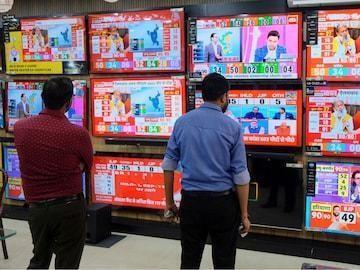
How Accurate Were Delhi Exit Poll Predictions in 2015 & 2020?
Exit polls are a crucial part of the democratic process, providing an early indication of the outcome of an election. In India, exit polls are conducted by various organizations and agencies, and they are widely followed by the media and the public. The accuracy of these exit polls, however, is often a topic of debate. In this blog post, we will examine the accuracy of Delhi exit polls in the 2015 and 2020 Delhi Assembly elections.
In the 2015 Delhi Assembly elections, exit polls estimated that the Aam Aadmi Party (AAP) would secure 45 seats, the Bharatiya Janata Party (BJP) 24, and the Indian National Congress (Congress) one. However, the actual results defied these predictions, with AAP winning a whopping 67 seats, leaving BJP with just three and Congress with none. The 22-seat difference between the predicted and actual outcome was a significant one, and it raised questions about the accuracy of exit polls.
Fast forward to 2020, and the predictions were similarly wide off the mark. Exit polls predicted that AAP would win 54 seats, while BJP would manage 15. However, the actual outcome saw AAP winning 62 seats, while BJP secured eight. The 12-seat difference between the predicted and actual outcome was significant, and it highlighted the limitations of exit polls.
But what went wrong? Why did exit polls fail to accurately predict the outcome of these elections? There are several reasons that can explain this disparity. Firstly, exit polls are based on a sample of voters, and this sample may not be representative of the entire electorate. Secondly, voters may not have answered the pollsters’ questions truthfully, or they may have changed their minds between the time they were polled and the time they cast their votes.
Another important factor to consider is that exit polls are conducted on a limited scale, and they may not capture the complexity of the electoral landscape. In Delhi, for instance, the city is divided into 11 constituencies, each with its unique characteristics and voting patterns. Exit polls may not have accounted for these differences, leading to inaccurate predictions.
In addition, exit polls are often influenced by the prevailing political narrative and the media’s coverage of the election. In 2015, the AAP was riding high on its popularity, and the media was projecting it as the clear favorite to win. This may have led to biased polling, where pollsters were more likely to predict a victory for AAP. Similarly, in 2020, the AAP was facing a tough challenge from the BJP, and the media was projecting a close contest. This may have led to biased polling, where pollsters were more likely to predict a victory for the AAP.
Despite these limitations, exit polls remain an important tool for understanding the mood of the electorate and providing an early indication of the outcome of an election. To increase their accuracy, however, pollsters need to be more nuanced in their approach and take into account the complexities of the electoral landscape.
In conclusion, the 2015 and 2020 Delhi Assembly elections saw significant disparities between exit poll predictions and the actual outcome. While exit polls are an important tool for understanding the mood of the electorate, they are not infallible, and their accuracy can be influenced by a range of factors. To increase their accuracy, pollsters need to be more nuanced in their approach and take into account the complexities of the electoral landscape.




